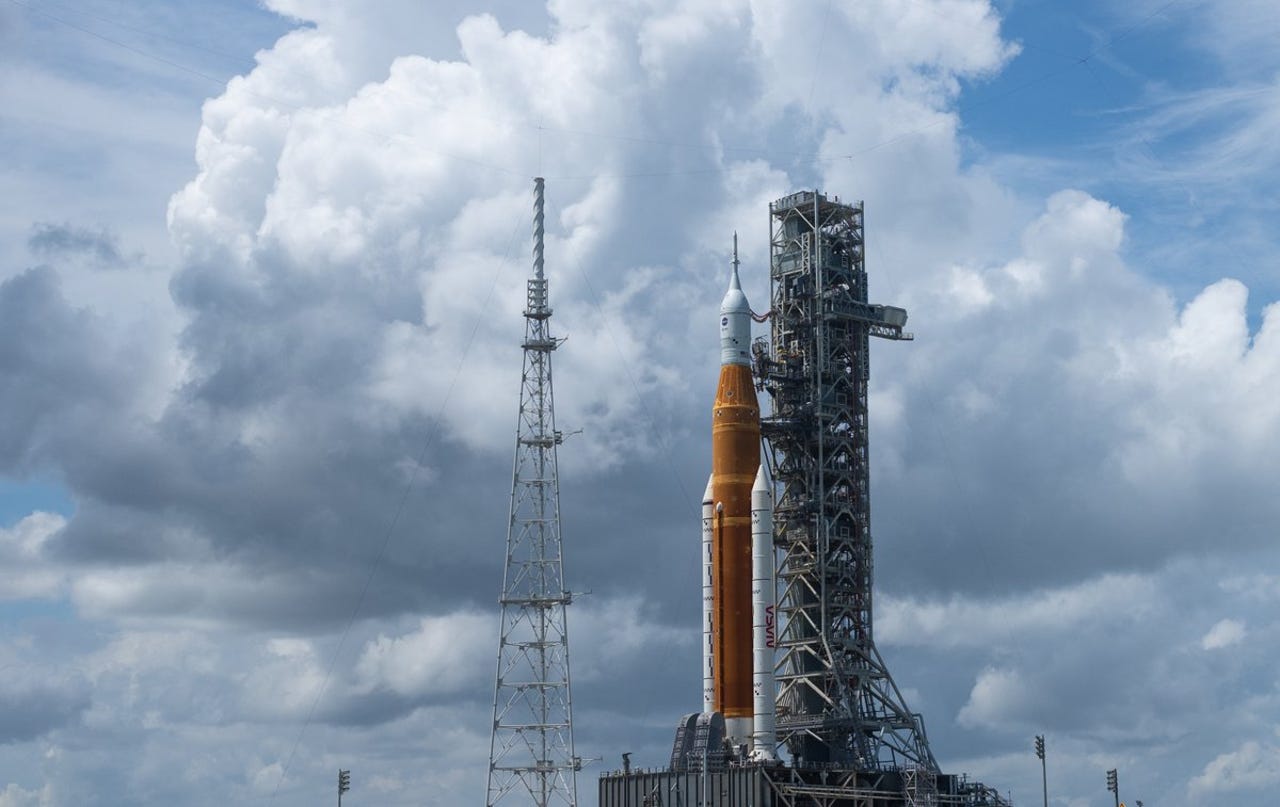A hurricane delays NASA's Artemis Moon rocket launch - again


NASA has postponed its Friday launch attempt for the Mars moon mission yet again because of a major storm approaching Florida. But the space agency is not going to roll the towering Space Launch System Rocket (SLS) back to the hangar this time.
Last Friday, NASA rolled the 321 foot (97 meter) SLS rocket and the Orion spacecraft to the launch pad as it prepared to launch on Monday November 14 from the Kennedy Space Center.
Innovation
The storm behind this Artemis launch delay is Tropical Storm Nicola, which is expected to reach landfall on Florida's southeast coast on Thursday morning as a Category 1 hurricane. The Kennedy Space Center is located on the southeast coast too, but is north of Nicola's projected path, which will likely hit West Palm Beach, about 150 miles south of Kennedy.
Also: What is Artemis? Everything you need to know about NASA's new moon mission
Although Hurricane Ian struck Florida's southwest coast, farther away from Kennedy than Nicole's projected path, Ian was a category 4 storm that parts of Florida are still recovering from. NASA in that case opted to roll the SLS rocket back to the hangar to shield it from damage. That would have been the third Artemis launch attempt.
At this stage, NASA has opted not to roll SLS back to the hangar after Sunday, assessing the safest option was to keep it and Orion secured at the pad.
While it's only a mile's journey from the hangar to Launch Pad 39B, last Friday's rollout to took 9 hours to complete, according to CNN.
Category 1 storms carry winds of between 74 mph to 95 mph. According to NASA, the SLS rocket is designed to "withstand 85 mph (74.4 knot) winds at the 60-foot level with structural margin."
"Current forecasts predict the greatest risks at the pad are high winds that are not expected to exceed the SLS design. The rocket is designed to withstand heavy rains at the launch pad and the spacecraft hatches have been secured to prevent water intrusion," NASA said in a blogpost.
Anticipating the storm, NASA has powered down Orion, the SLS core stage, the interim cryogenic propulsion stage, and boosters. It's also installed a hard cover over the launch abort system window and retracted the mobile launcher's crew access arm. Teams have also secured equipment that could become debris.
NASA's next launch window is at 1:04am EST on Wednesday November 16. It has a backup date of Saturday, November 19.
The Artemis I mission will eventually send NASA's new rocket and spacecraft, unmanned, around moon as a test run before a human-led mission within the next decade.